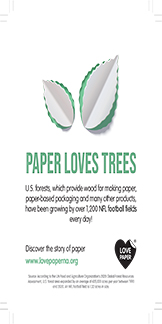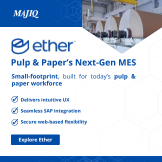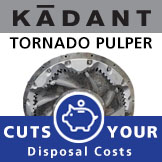NEW YORK (News release) -- Mercer International Inc. reported third quarter 2025 Operating EBITDA of negative $28.1 million, a decrease from positive $50.5 million in the same quarter of 2024 and negative $20.9 million in the second quarter of 2025.
In the third quarter of 2025, net loss was $80.8 million ($1.21 per share) compared to $17.6 million ($0.26 per share) in the same quarter of 2024 and $86.1 million ($1.29 per share) in the second quarter of 2025.
Mr. Juan Carlos Bueno, Chief Executive Officer, stated: "In the third quarter of 2025, persistent global economic and trade uncertainties, fiber scarcity in Germany as well as the impact of pulp substitution accelerated the decline in pulp market demand and pricing, which negatively impacted our operating results and contributed to a $20.4 million non-cash inventory impairment charge in the quarter.
We are continuing to advance our "One Goal One Hundred" program, which we began in our second quarter and includes cost reduction initiatives and operational efficiency measures to achieve our target of $100 million in profitability improvement actions by the end of 2026, using 2024 as a baseline. We currently expect to realize approximately $30 million in cost savings and reliability improvements by the end of 2025 and remain confident that we will achieve our target by the end of 2026.
We are currently advancing a carbon capture and sequestration project at the Peace River mill, which is in the conceptual engineering and scope development stage (FEL-2). The project is being jointly developed together with Svante Technologies Inc., a carbon capture and removal solutions provider. To validate the core technology, we are currently commissioning and starting-up a pilot for this project, which is expected to be operating in the fourth quarter. The next step will be front-end engineering design (FEED) that we expect to trigger in the second quarter of 2026. We view this project as a compelling opportunity to enhance value and the long-term economic viability and sustainability of the mill.
In the third quarter of 2025, sales realizations for both softwood and hardwood pulp decreased compared to the second quarter due to lower prices across all markets, driven by the continued weak demand stemming from the current economic climate and continuing global trade policy uncertainty, together with increased substitution of softwood for hardwood given the approximately $200 per ton price gap between these products. Softwood pulp third-party list prices in Europe and the third-party net prices in China decreased, with the decline in China also impacted by oversupply in the paper market. In North America, third-party softwood pulp list prices decreased in the third quarter of 2025 compared to the second quarter of 2025 due to downward price pressure from other markets. Looking ahead to the fourth quarter of 2025, we currently expect pulp prices to remain weak.
Our lumber sales realizations in both the U.S. and Europe were relatively stable in the third quarter of 2025 compared to the second quarter. We currently expect lumber prices to modestly increase in Europe in the fourth quarter of 2025 due to higher fiber costs. In the U.S., we currently expect slightly higher prices in the latter part of the fourth quarter of 2025 driven by the combined impact of duties and tariffs imposed on producers reducing supply and supporting higher prices.
In October 2025, the United States implemented Section 232 tariffs, citing national security as the rationale to impose a 10% global tariff on imported lumber. These new tariffs are not currently expected to have a significant effect on our European lumber sales. However, for Canadian lumber producers, these are in addition to existing duties, resulting in combined duties and tariffs ranging from about 45% to 58%. We currently expect that if prolonged, these conditions may result in sawmill curtailments and impact fiber supply in Canada. We continue to monitor ongoing trade policy developments.
Per unit fiber costs for our pulp and solid wood segments were relatively steady in the third quarter of 2025 compared to the second quarter. In the fourth quarter of 2025, we currently expect per unit fiber costs to increase for all our mills due to supply constraints and, in Germany, strong competing demand for pellets.
In the third quarter of 2025, our pulp mills had 32 days of downtime (approximately 35,700 ADMTs), which included 20 days of planned annual maintenance and 12 days of unplanned downtime at the Celgar mill due to a mechanical failure. We currently expect a total of 18 days of planned annual maintenance downtime at the Stendal mill in the fourth quarter of 2025.
Our solid wood segment results continued to be weighed down by weak demand due to elevated interest rates and broader economic challenges in Europe. However, we continue to expect significantly improved segment performance when the interest rate environment improves. In our solid wood segment, our mass timber business has developed a healthy order book despite the ongoing elevated interest rate environment in the U.S. and anticipates a positive outlook for 2026."
Mr. Bueno concluded: "We recognize that the combined challenges faced by our industries in the third quarter are expected to persist into the fourth quarter. Against this backdrop, liquidity remains our top priority. While we have made good progress on our One Goal One Hundred program and remain committed to rebalancing our portfolio of assets, we will take additional decisive steps aimed at increasing our liquidity. These include further cost reductions, lowering capital expenditures for 2026 and other working capital measures that would improve our balance sheet and align with our long-term strategy. We believe in the value generating capability of our core assets as conditions improve."






















